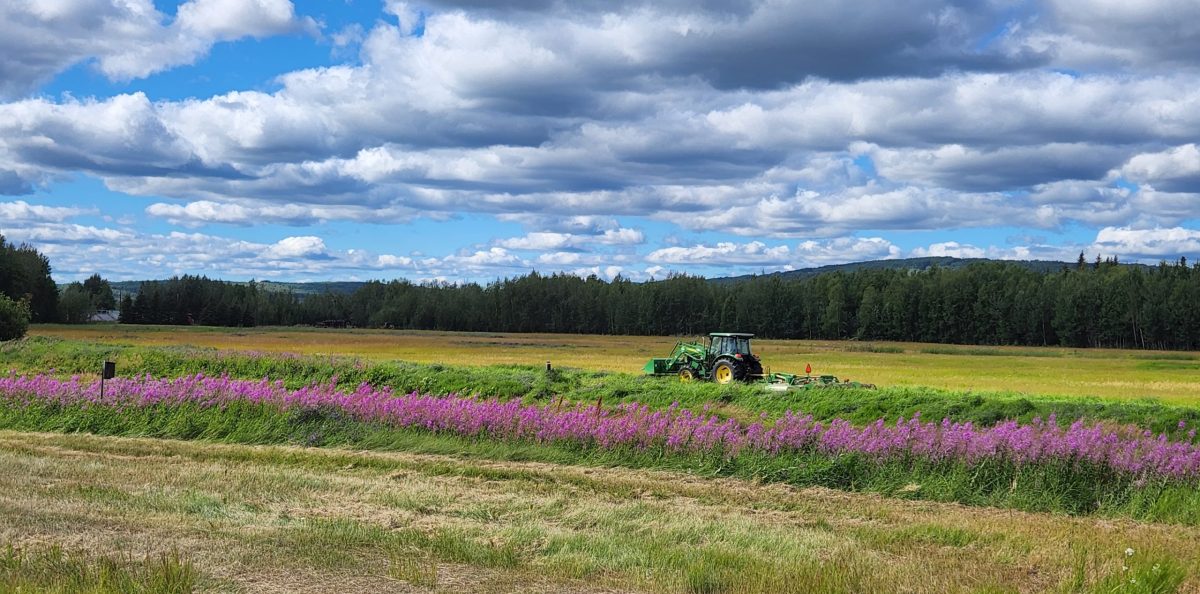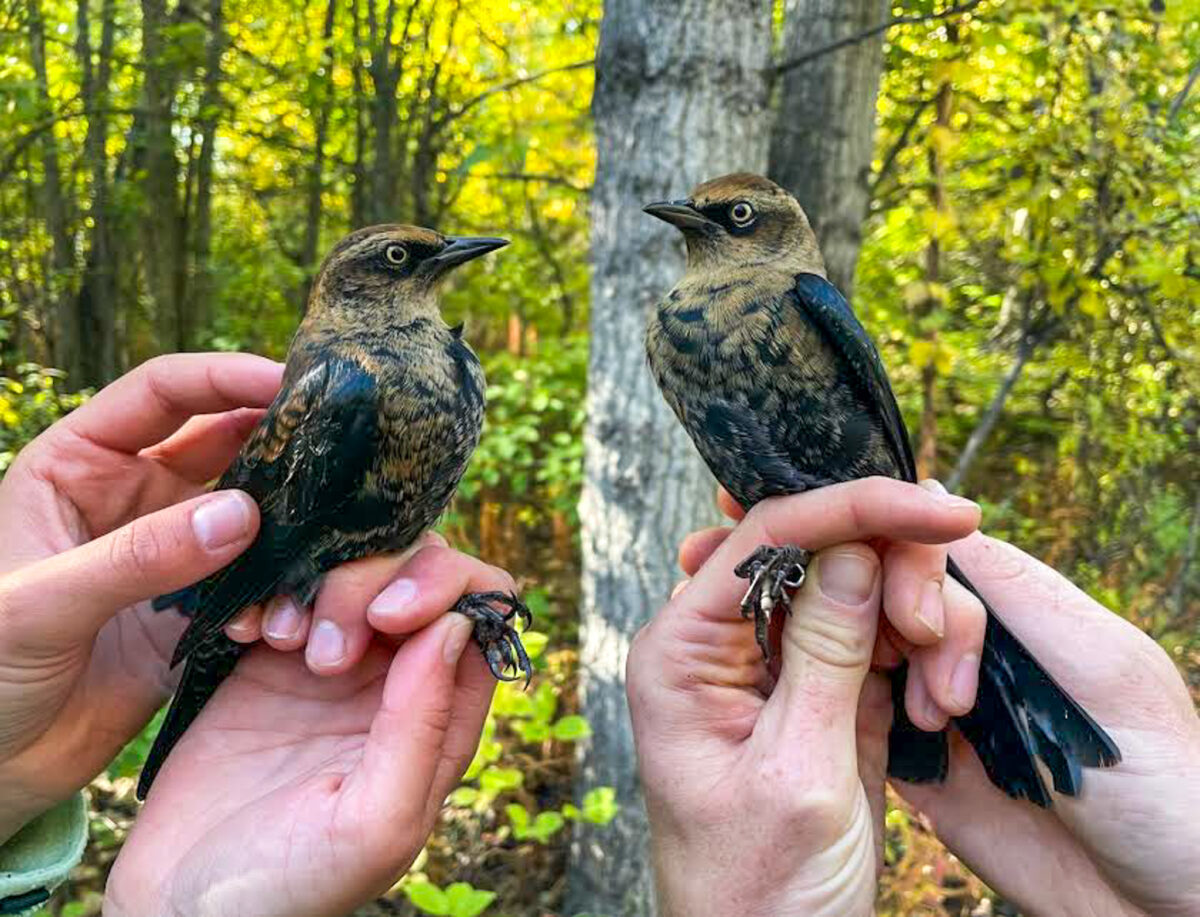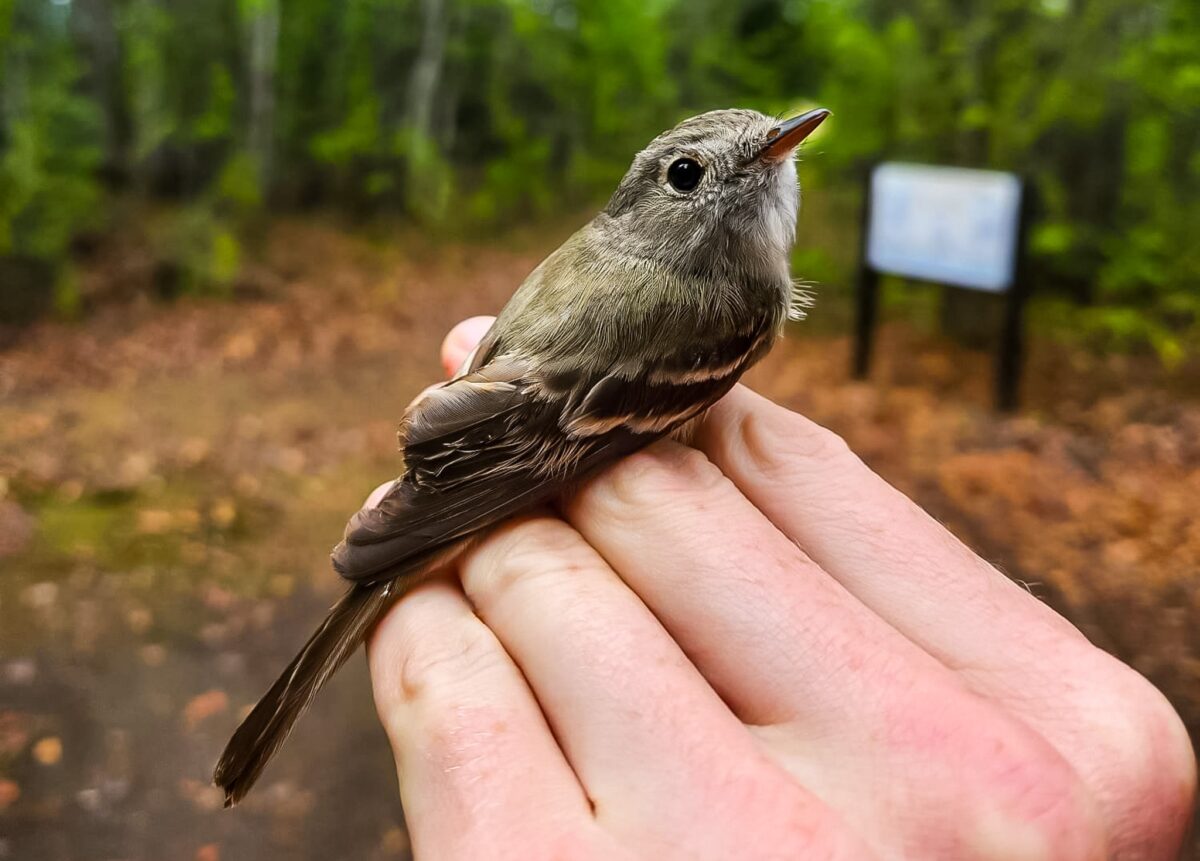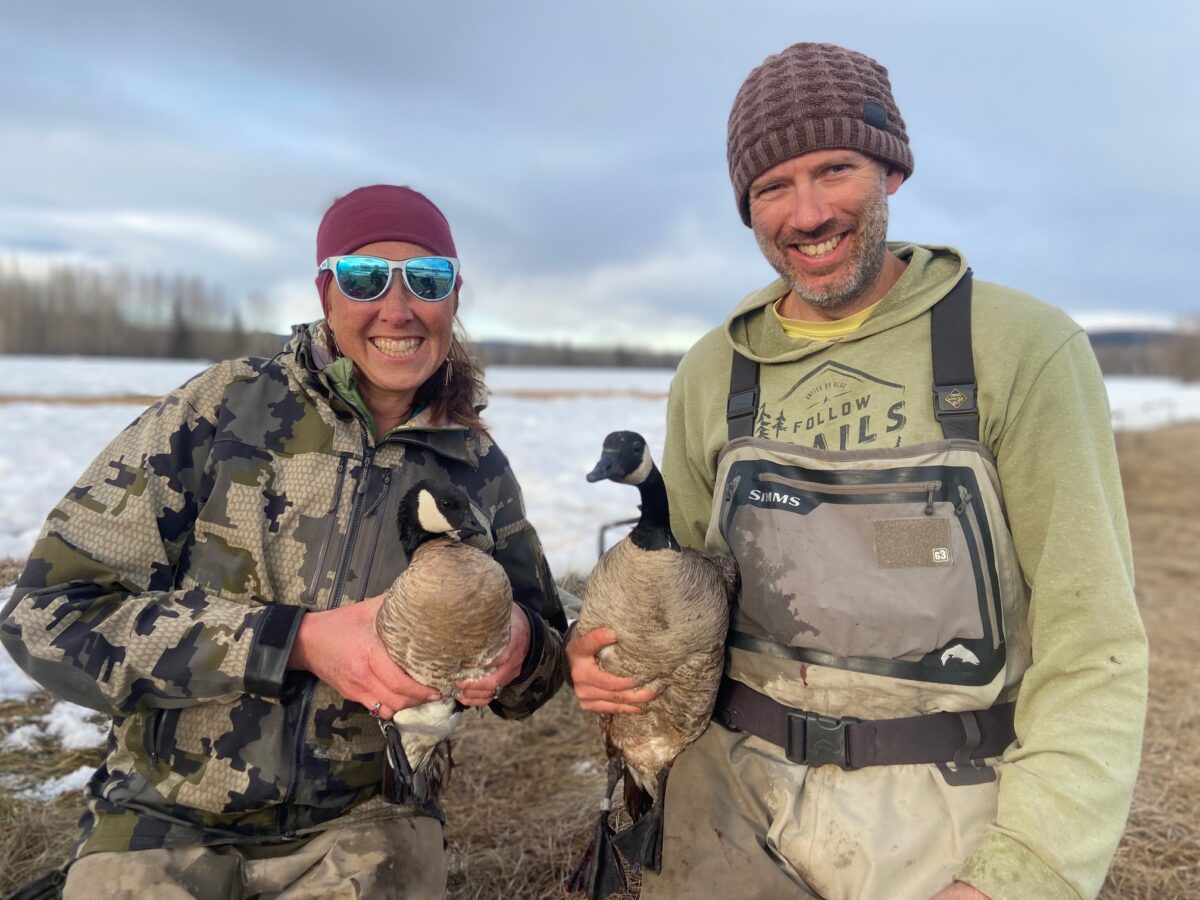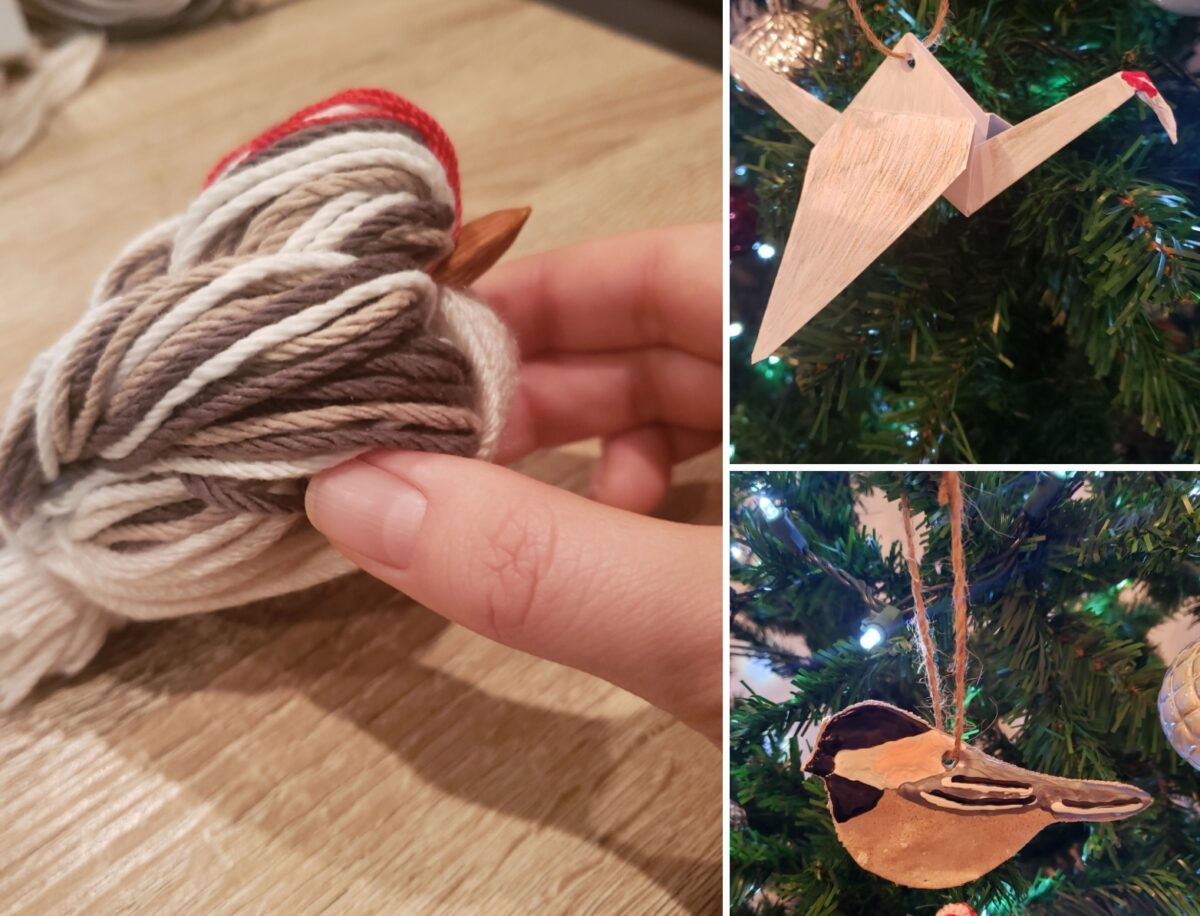The springtime brings many changes to Interior Alaska. Here at Creamer’s Field Migratory Waterfowl Refuge in Fairbanks, the skiers and dog mushers put away their skis and puffy coats to wait patiently for the next winter season. As the temperatures warm, the rapidly melting snow exposes bare ground and floods the sprawling fields, creating an ideal respite for thousands of birds from their grueling migration journeys as they venture towards their northern breeding grounds. The large spectacle of birds attracts travelers from all over the world who are eager to experience the splendor of the refuge. As the masses of birds feed on the leftover and spread grain in the fields, refuge management heeds the incoming warmer months and prepares their cultivation for migration. Early Dairy Farming Farming interest took off in the Interior in the early 1900’s after the discovery of gold and the area flooded with prospectors expecting to strike it rich. As the town of Fairbanks grew, …
It’s nesting season! What should you do if you find a baby bird?
In the transition from the cold winter to the warmer seasons, birds migrate to their summer grounds to find safe habitats to mate, give birth, raise young, escape predators, and to locate food. A majority of the nearly 470 bird species found here in Alaska are migratory and they travel here from all seven continents! Wildlife should never be approached in most situations. It is understandable to want to help wildlife that seems to be in trouble, but it is generally best to leave wild animals alone. Wildlife can get incredibly stressed by being handled by humans, the young and parents especially. Handling wildlife can even be detrimental to some species and impact their ability to thermoregulate or cause them to overheat. Some animals can even carry diseases that affect people and pets. It is quite common for birds and mammals to leave their young alone for short periods or to be nearby and out of your sight, and it …
Seeking Songbirds: Fall Bird Banding at the Creamer’s Field Migration Station
The rapidly shifting seasons continually brings many changes to Creamer’s Field Migratory Waterfowl Refuge. As the springtime floodwaters receded, the warmer days awakened hibernating life, and the sunlight from the longer days brought forth lush green leaves and grass seemingly overnight! In the spring, sojourning songbirds arrived after their long migratory journeys to raise the next generation during the warmer months. The birds embark on various nest establishing and construction in preparation for breeding. The abundance of berries, fruit, seeds, insects, and other invertebrates during the warmer months grant adult birds the ability to feed themselves, their young, and eventually the young birds learn to forage and feed themselves throughout the season. Bird Population Data The Alaska Songbird Institute (ASI) completed their banding efforts for 2023 at the Creamer’s Field Migration Station (CFMS) for the fall season. As discussed, in a previous blog post about springtime bird banding: researchers catch, record, and keep track of individual birds by placing an …
Seeking Songbirds: Spring Bird Banding at the Creamer’s Field Migration Station
For decades, the site of the former dairy and current Creamer’s Field Migratory Waterfowl Refuge has been distinguishable by the grand white barns, expansive open fields, white pillars of birch trees on the wetland, plentiful wildlife, and miles of trails. Amid the various habitats and wildlife, the refuge is best known by birdwatchers, photographers, and researchers for its abundance of birds. The refuge hosts resident and migratory birds of all types including waterfowl, shorebirds, Sandhill Cranes, seabirds, birds of prey, and songbirds. Songbirds at Creamer’s Field are notable for the vast amount of data they’ve provided to scientists over the decades at the research station based here. To find it, visitors must venture to the west side of the refuge. Along the Seasonal Wetland Trail, nestled back in the boreal forest at the center of numerous converging footpaths, is the northernmost continually operated songbird banding station in North America: The Creamer’s Field Migration Station (below). The Creamer’s Field Migration Station …
Waterfowl Research at the Refuge: Spring Migration
By Michael Guttery and Tasha DiMarzio, Alaska Department of Fish and Game Waterfowl Program Over the last few months, the Alaska Department of Fish and Game (ADF&G) Statewide Waterfowl Program staff have been developing a research project focusing on white-cheeked geese. According to the National Audubon Society, the white-cheeked geese of North America were long considered a variable species of Canada Geese. It was not until 2004 that four of the smallest forms (Richardson’s, Aleutian, Taverner’s, and Minima) were recognized as their own distinct species known as Cackling Geese. The seven species of Canada Geese are the Atlantic, Interior, Giant, Moffitt’s, Dusky, Vancouver, and Lesser. In this research project, ADF&G is focusing on Lesser Canada Geese (Branta canadensis parvipes) and Taverner’s Cackling Geese (B. hutchinsii taverneri). These two species of geese are common in Alaska, though relatively little is known about them. In the late 1990’s, a University of Alaska Fairbanks graduate student, Dr. Michael Eichholz, conducted research aimed at mapping …
DIY Bird Ornament Crafts for the Holidays!
2020 has been a whirlwind to say the least! Unfortunately, we all were unable to gather together this time of year for ornament crafting with our amazing volunteers in the Farmhouse Visitors Center. But that doesn’t mean that our creativity must be stifled when it comes to decorating for the holidays! I have compiled three easy bird ornament crafts that the whole family can create together with the right materials, supervision, and creative inspiration! The first craft is the Origami Sandhill Crane Ornament! Sandhill Cranes are a standout migrating bird that pass through Creamer’s Field during the warmer months. This ornament is sure to be a standout on your tree! Please follow this video tutorial on how to properly fold the paper to create the origami crane! After your paper crane is folded, add physical features so people know it’s a Sandhill Crane! Add the red crown, the yellow eyes, and you can even color orange for the iron rich …

